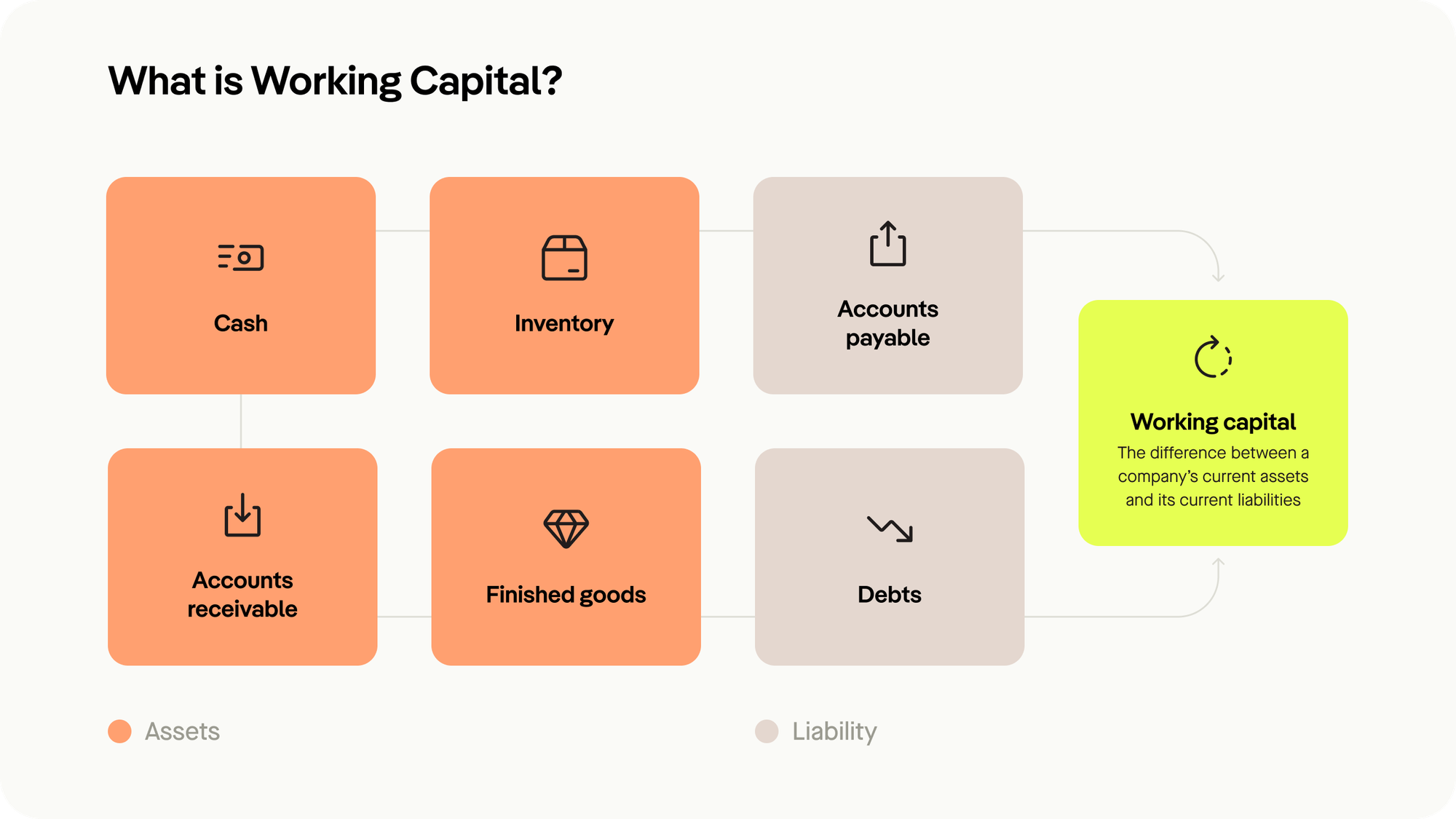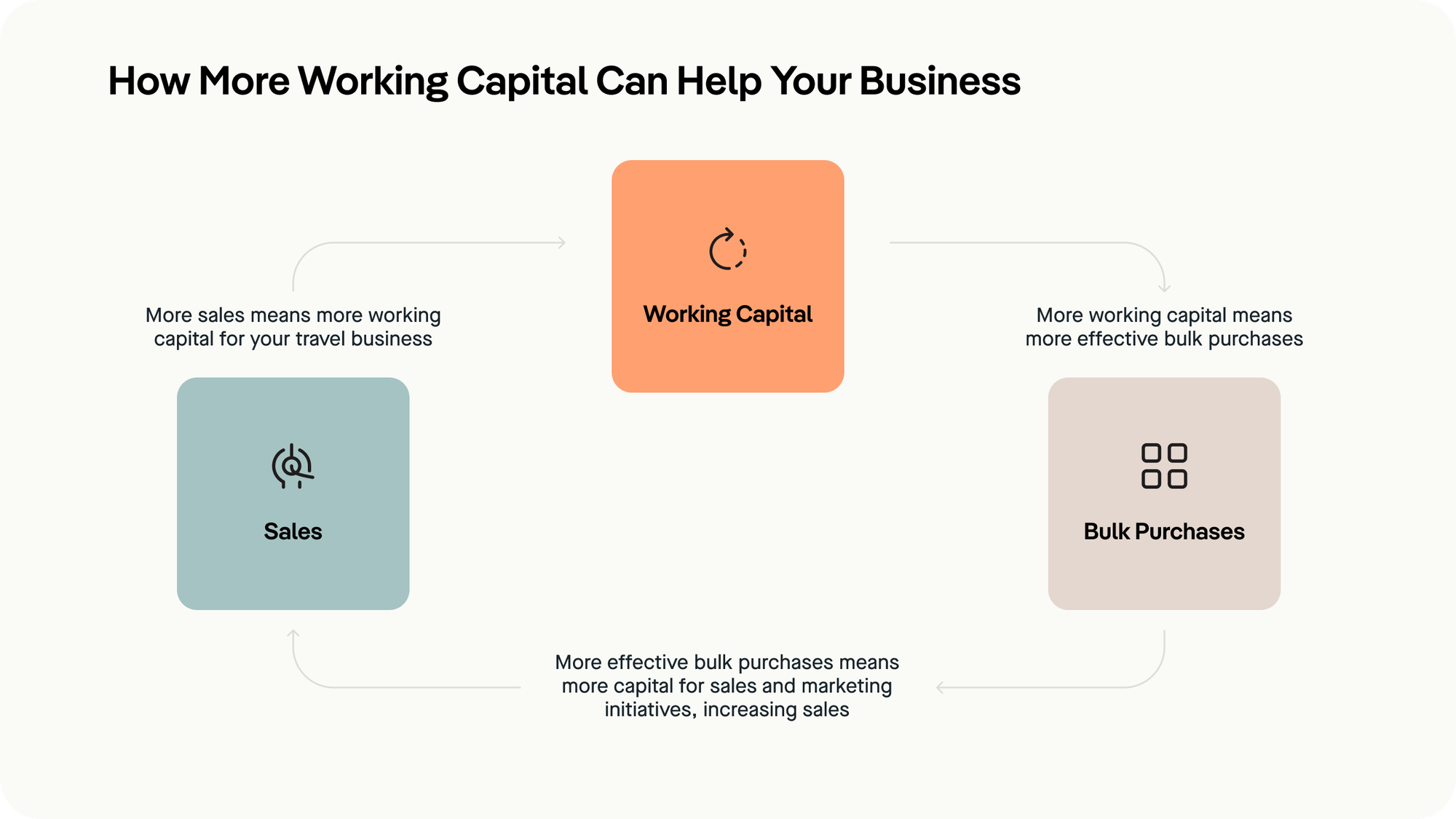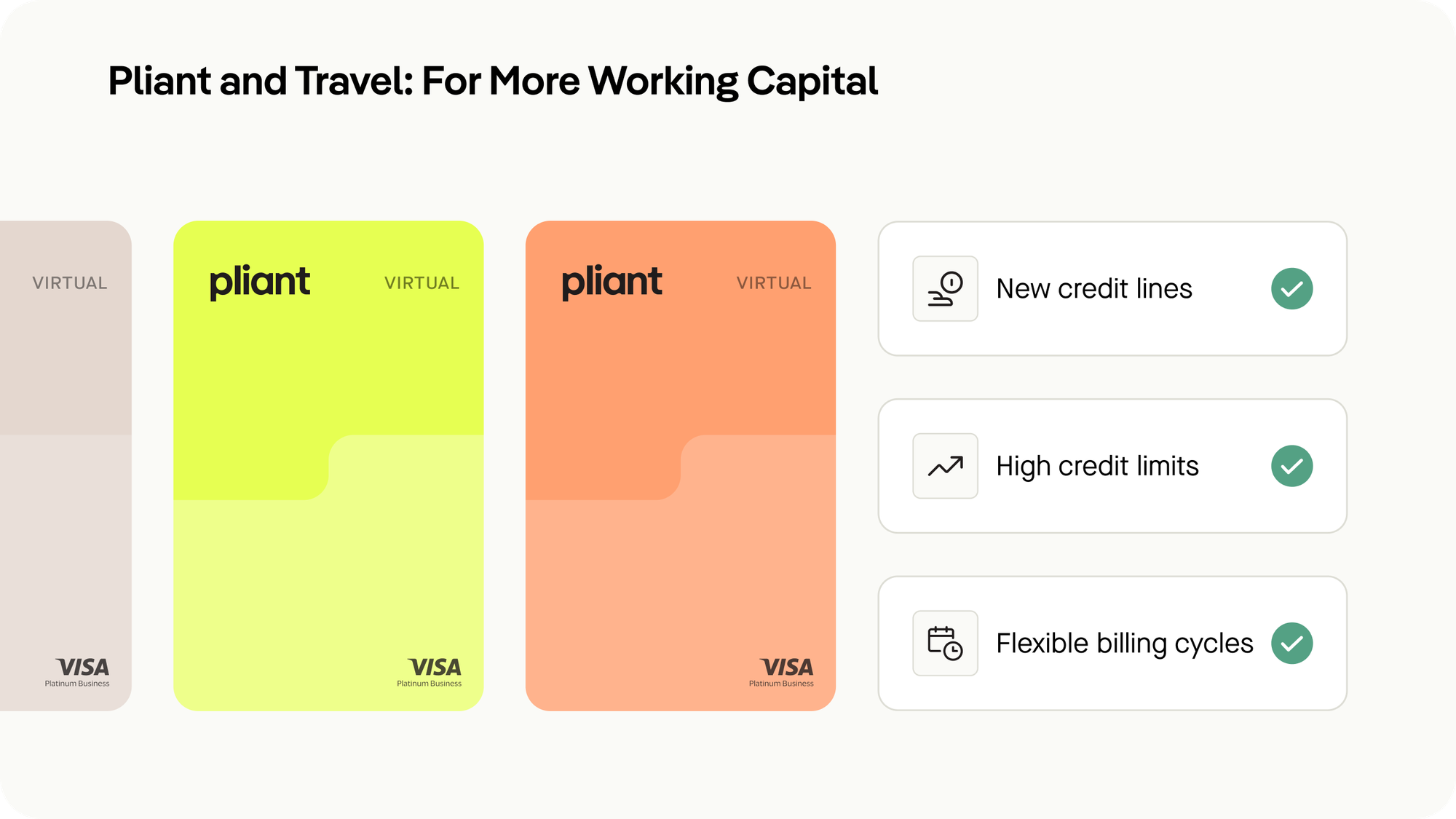Working Capital for the Travel Industry: Are Credit Cards the Answer?
Working capital is important for every business, but in the hyper-competitive travel industry, it can be the difference between struggling for survival and sustained success. In a sector that’s more vulnerable than most to the impacts of new technology, global events, and macroeconomic trends, the challenges facing your travel company are continually evolving – and the ability to stay flexible can be your biggest asset.


Fortunately, there are plenty of solutions to increasing your working capital – and Pliant credit cards for the travel industry are among the best ways to keep your travel business moving forward.
To understand the true value that a flexible credit card platform can offer your business, we’ll look at the basics of working capital, focusing on the unique challenges faced by travel agencies, travel management companies (TMCs) and online travel agencies (OTAs). From there, we’ll look in-depth at the different ways that credit cards can help travel businesses build resilience in an ever-changing market – and how you can start your journey today. We’ll cover:
What is working capital?
The differences between working capital and cash flow
Why working capital is important for travel companies
The benefits of increasing your travel company’s working capital
How credit cards can be the solution to low working capital by:
Establishing a new line of credit
Increasing capital availability with higher limits
Reducing strain on capital resources with flexible repayment terms
Pliant: Your Credit Card Partner for the Travel Industry
At Pliant, we understand the challenges of establishing healthy working capital in the travel industry – as well as countless other financial obstacles faced by travel agencies, TMCs, and OTAs – because we talk to business owners about them every day. We’re here to help you succeed. Throughout a series of articles, we’re diving deep into the potential ways to increase margins, working capital, and efficiency: providing you with the inspiration and expertise to grow your business with Pliant.
Want to talk to us about it? Get in touch with a Pliant expert today for a free, non-binding demo.
What Is Working Capital?

Essentially, working capital is your “room to maneuver.” That’s because if you have enough working capital available to cover day-to-day operational expenses, your business will be able to meet its short-term obligations and hopefully still have enough left over to cover risks or even to invest in future growth.
As such, monitoring working capital, and working hard to find ways to increase it, is crucial for establishing financial stability: although it’s a short-term measure of financial health, it’s actually an important building block in creating a business that’s sustainable in the long term, as it influences your company's resilience and efficiency.
However, you should be careful about aiming for a benchmark figure for working capital, as the numbers can be deceiving. High working capital could mean that you have too much inventory, that you’re sitting on surplus cash, or that you’ve missed opportunities to leverage low-cost debt. In the case of the travel industry, you could be sitting on a lot of bookings or reservations that you haven’t actually sold, which become a liability rather than an asset when they expire.
Working Capital vs Cash Flow
Working capital and cash flow are sometimes confused. While the two terms are interconnected, they measure different metrics and as such serve distinct roles in financial management. Working capital represents a company's short-term operational liquidity, calculated by subtracting current liabilities from current assets.
Cash flow, on the other hand, tracks the movement of cash into and out of a business over a specific period. While working capital assesses a company's ability to cover day-to-day obligations, cash flow provides a broader picture of financial health, incorporating investment activities and financing.
Why Is Working Capital Relevant for Travel Companies?

The reason for this is that the structure of these types of travel companies means that capital has the potential to get “tied up,” and the bigger your business grows, the greater the risk that low working capital poses.
If you run a travel business, you’ll know that the heartbeat of the company is in operations: managing logistics, coordinating reservations, and handling client bookings. As a result, working capital is massively influenced by the size of your inventory: ranging from hotel reservations and airline tickets to transportation services.
This necessitates a robust working capital strategy. You need to make sure that your working capital is still positive, even after payments to suppliers are completed and reservations are made. Without it, managing cancellations can cause serious disruption to your financial resources, and you may have to sacrifice other expenditures simply to cover the risk. However, with more flexibility, you can ensure that your business continues to grow, even in the face of unpredictable demand fluctuations or economic downturns.
Working Capital and OTAs
Online travel agencies generally don’t operate with inventory in the same way that TMCs or travel agencies do. Although the model is theoretically less capital-intensive, where transactions often occur in real-time and payments are automated, a solid foundation of working capital is still to your advantage. This will allow your OTA to explore expansion opportunities, invest in technology, and navigate unforeseen challenges.
What Could You Achieve with Higher Working Capital?

The best example for this is in bulk purchasing. You need the “wiggle room” in your working capital in order to secure the best deals and ensure profitable bulk bookings during peak seasons, leaving you with sufficient funds to invest in marketing initiatives and move the tours off your books. If you don’t have access to reliable lines of credit, you’ll be locked out of this potential, which only makes the problem worse.
It’s important to remember, when looking at ways to increase your working capital, that the goal of your business is both to survive and to thrive. A working capital solution, for example Pliant credit cards, should not only safeguards against uncertainties but provide a long term solution for growth.
Are Credit Cards Really the Solution to Increasing Working Capital?
At Pliant, we’ve seen first hand how our credit lines, high limits and flexible repayment terms have helped travel companies increase their working capital and lay the groundwork for long-term success.
How does this work? In the travel industry, where cash flow fluctuations are common and operational agility is crucial, credit cards operate as pressure valves. This works in essentially two ways: enabling you to acquire capital faster and reducing the speed at which you spend.
More access to capital. By providing an immediate injection of liquidity, your company is able to cover urgent expenses, manage supplier payments, and navigate seasonal variations in bookings without eating up all of your working capital.
Flexible repayment options. With the possibility to repay capital at a cadence you define yourself, rather than at the end of the month or as expenses incur (as with prepaid cards or invoices), it’s far less challenging to maintain a consistent cash reserve.
For smaller travel agencies or startups, where securing loans may be challenging, credit cards offer an accessible and quick financial lifeline. However, relying excessively on credit cards without a comprehensive working capital strategy can lead to accumulating debt and interest payments. It's essential for travel businesses to strike a balance, leveraging credit cards as a tactical resource while simultaneously implementing sound financial practices.
Pliant and Travel: For More Working Capital

We’ve highlighted three ways in which Pliant can help you increase your working capital below. We’ll not only help you address your immediate financial needs, but also position your travel company to deal with the unpredictable industry conditions with resilience and financial dexterity.
1. Improve Your Working Capital With a New Credit Line
Simply adding a new credit line gives you extra security when it comes to securing the working capital you need to be successful. You don’t have to replace your existing bank or financing framework to use Pliant: our innovative solution can be added as a backup to your existing stack, or used as your primary credit card.
Once credit cracks are complete, you’ll be able to pay for a range of company expenses using Visa virtual credit cards. Better still, you’ll gain access to all the other benefits that Pliant Apps and Pliant Pro API provide, including generous cashback offers that reduce the strain on your working capital, and global acceptance to ensure that you can continue to operate a truly global travel business.
Did you know? With rapid onboarding and KYC, you can access your new line of credit with Pliant much faster than using a traditional bank.
2. Get Higher Credit Limits
Once you’ve secured your new credit line, it’s time to use it. Good news though – with your Pliant credit card, you get substantial limits, pending successful credit checks. This feature is instrumental in elevating working capital, and ensures you can make the vital purchases that propel your business forward in the travel industry.
There are countless advantages to having higher credit limits, particularly in the travel industry, where the future is rarely certain. Above anything else, you gain peace of mind, giving you the confidence to invest in growth while ensuring stability in the competitive landscape of the travel sector.
Did you know? With Pliant premium credit cards you get a range of additional perks on top of a high credit card limit, including travel insurance, lounge access and much more.
3. Flexible Billing Cycles
Naturally, securing capital via credit cards isn’t free money – and at some point you will need to repay the capital you access using your Pliant card. However, we recognize the financial landscape of the travel industry, and our flexible billing cycles reflect that. Our tailored approach allows you to align your company’s repayments with its specific cash flow patterns, optimizing working capital utilization.
By accommodating the dynamic demands and seasonal fluctuations inherent in the travel sector, we can help your companies maintain financial agility. This flexibility in repayment terms not only eases the burden on immediate cash reserves but also empowers your business to manage working capital more efficiently. The result: adaptability in an industry characterized by constant change.
Did you know? Pliant’s flexible billing cycles mean that you plan for the long term with larger individual payments.
Let’s Get To Work(ing Capital)
Hopefully, you’ll now be a little better acquainted with the concept of working capital and how increasing your access to it can help you navigate the tough financial landscape of the travel industry. Although there are plenty of ways to increase your working capital, credit cards are a solution that you can explore further – with the help of the Pliant team.
To dig deeper into how Pliant can cater to your company's specific needs, you can book your personalized demo today. Our experts are ready to guide you through the tailored features that can revolutionize your working capital management. Secure your business's financial future today – and never worry about working capital again.






